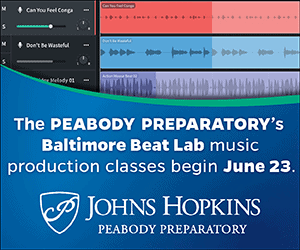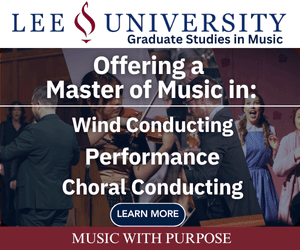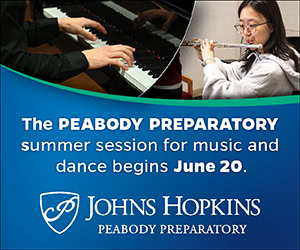/ News Posts / Distance Learning for Special Learners in the Music Classroom
Distance Learning for Special Learners in the Music Classroom
By NAfME Member Brian Wagner-Yeung
Many students have been struggling during this time period of COVID-19. While music programs were full of live music-making, ensemble experiences, and performances—music education had to quickly adapt to keep high quality instruction happening, while teaching remotely. In addition, music educators had to find alternative ways to teach musical skills to keep the same level of instruction happening for when students return back into the classroom.
While this time period has been a challenge for all students, families, and educators, students with special needs have had to adjust even more than their neurotypical peers. Students with special needs depend on the daily routines that happen in school environments, socialization opportunities with peers, and having modified or adapted materials presented to them. The change in educational delivery presents a challenge for many students, whether they are learning synchronously or asynchronously.
Music educators must take into account the many areas to help support students with special needs during this unprecedented time. Music educators must be aware of the strengths of their students, as well as areas with room to grow. While it is always important to know this information, especially now music educators should be aware of any information presented in a students’ Individualized Education Program (IEP). Moreover, music educators can adapt their virtual learning platforms to support students with special needs in multiple areas, including: technology support, social-emotional needs, social skills, and continuous musical learning.
Technology Support
Technology is the key aspect when it comes to distance learning. Whether students are using computers/laptops, tablets, or phones—technology is where instruction is taking place. Moreover, instruction can happen synchronously (students log in and participate in a live virtual instruction), or asynchronously (students log in at their own pace and participate in the instruction, usually pre-recorded or pre-prepared). Whether a teacher prepares their instruction synchronously or asynchronously, it all depends on accessibility with technology.
For students with special needs, technology may become an additional barrier to their learning. While they should always incorporate universal design—which is removing the barriers for all students—educators need to be aware that many students may struggle with technology. Some students are dependent on having adult support or hand-over-hand assistance. However, family members may not always be readily available to assist their children with technology during remote instruction. Music educators need to find ways to break down these barriers to allow students to have access to their education, and hopefully teach them skills that allow them to be as independent as possible with technology.
One example of a barrier to be broken is teaching students (and family members) how to log on or access whichever platform is being utilized. For example, many districts are using the platform Google Classroom. Nevertheless, some districts might require multiple steps for students to log on to access their classes. For students with special needs, this may become overwhelming. Music educators can incorporate step-by-step visual checklists on how to log on. This can help students (and family members) learn this new skill so they can independently gain access to their classrooms. When educators break things down into smaller steps or chunks, this is what is called task analysis. Below is a visual example of how a student could log onto their Google Classroom. (Click to enlarge.)
Special education students receive mandated services and accommodations based on their individual learning needs. In a typical special education classroom, many students learn best through hands-on instruction. This can still be done using technology. Some students may be able to complete activities or assignments using a form or survey. Nevertheless, music educators can create interactive assignments for students who learn differently. For example, music educators can create interactive Google Slides, where students can touch and drag different elements on an assignment. Below is an interactive assignment focusing on rondo form from Raiders of the Lost Ark Theme. Here, students have the opportunity to drag the letters below each section to show the form. Other students may have submitted the same assignment by leaving a comment or just writing the letters in. In this example, the activity is differentiated in multiple ways. (Click to enlarge.)
Teachers should also incorporate as many platforms as possible. For example, music educators can create videos on YouTube to help students with different musical activities. When teaching a song or dance with visual supports, teachers can insert images into iMovie with the audio files attached, and then upload the video to YouTube. In this format, students can view the text or visuals in time with the audio without distractions. Below are two examples of the song “The Lion Sleeps Tonight” by The Tokens. Another platform that can be utilized is Flipgrid. Since many special learners succeed by physically showing teachers a skill they are learning rather than a written assignment, this is a platform where students can submit short video clips of them demonstrating specific musical skills. Students can also respond to classmates’ videos which adds a social element.
| The Lion Sleeps Tonight Lyrics | https://youtu.be/mpXiBCrdOTE |
| The Lion Sleeps Tonight Dance | https://youtu.be/puRCEL_vVeE |
Social-Emotional Needs
It is critical music educators are thinking about students’ social-emotional needs during this time. Many students may be feeling different emotions such as fear, anxiety, or depression. Some students have been affected by COVID-19, whether a family member has gotten sick, or change in home dynamics due to economic challenges. Many special learners may be struggling to grasp why school is now taking place at home, and their daily routine has changed.
One area to help support special needs students is by using social stories. Social stories are a tool typically used for individuals with autism spectrum disorders (ASD). Social stories are written to teach a way to help replace a behavior, or help individuals adapt to a change in their environment or routine. Social stories will typically have visuals paired based on cognitive level, and areas of interest. Social stories can be implemented for students to understand why they are learning from home, why they are not going to school, or why they need to wear a mask. Teachers can create social stories and share with families to help support students at home. Furthermore, many educators have already created social stories focused on COVID-19. This link has several examples for different age levels.
Special education students thrive when there is a set routine, and when they know what is happening next. While this transition to distance learning has been a huge change in routine, it is important that music educators keep some sort of structure going on at home with students’ musical learning. Music educators can communicate to parents that music class should happen in the same location at home each week. Moreover, teachers should try to follow a consistent schedule each class so students gain a routine. If possible, educators can mimic the flow which would normally happen in person. While changes will definitely be made in the delivery of instruction, by keeping the same flow will help students adjust better. Below is an example of a visual schedule that could be posted for each music class for students to know the order of activities. (Click to enlarge.)

As mentioned, many students may be feeling new types of emotions due to all of these changes. Educators can take this into account, and use music as a tool to help students cope with these new anxieties. Teachers can carefully choose music and repertoire that can be used as a teaching tool to help students understand that this is a passing phase, and things will eventually get better. One example of a repertoire choice is “Give a Little Love” by Ziggy Marley. This song could be used to help older students understand that while we are going through a difficult time, when we work together, things will get better. Teachers can also use “Three Little Birds” by Bob Marley for younger students to help them understand that everything will be alright. (Click to enlarge.)
Social Skills
Social skills are another area for students with special needs that should be focused on during this time period. For many students, especially students with ASD, social skills may be an area that is one of their core deficits. Educators regularly practice these skills in person so that students can generalize them and incorporate them into real life settings. Through social skills, many students learn how to interact and engage with peers, develop expressive and receptive language, practice their own method of communication (whether they are able to verbally speak or need to use AAC—augmentative and alternative communication), and learn how to appropriately socialize. Moreover, distance learning can pose a serious threat to students’ social skills, in that the lack of engagement with their peers may cause many students to regress. Music educators need to incorporate social skills opportunities in their remote teaching to keep these skills utilized.
As with focusing on their social-emotional needs, music educators can choose music and repertoire that allows opportunities for students to practice their social skills, even remotely. Music can be chosen with themes around friendships, and opportunities can be showcased for students to engage musically through virtual teaching. One example is the song “You’ve Got a Friend” by Carole King. Once students learn this song, students can then compose an alternative chorus to the song about a friend in class. Students can share different activities they would like to do with their friend. Afterwards, students can present their compositions through synchronous teaching, or post on Flipgrid. Through this, students are still engaging with each other, focusing on building and maintaining friendships, and focusing on language acquisition and development. (Click to enlarge.)
A second example is to provide as many virtually fun and interactive experiences as possible. Music educators can create musical themes for each week that can drive music instruction and social skills. One example is having every Friday be called “Fun Friday.” Teachers could take students on a virtual field trip, or plan virtual events like a sing-along or talent show. While this could be fun and motivating, this could also provide opportunities for many students to see their peers and continue to focus on social skills. Teachers can allow opportunities for students to socialize through these fun events, which will in turn allow their social skills to continue to develop.
Continuous Musical Learning
Music educators need to find ways to make sure musical instruction is still happening for special learners remotely. In addition, music educators need to make sure instruction is still differentiated to the individualized level of each student. The goal as educators is to make sure students are still learning, and instruction is kept at a high level for once they return to school buildings.
When focusing on a musical skill, such as rhythm reading, educators can create differentiated sheet music examples on Google Documents. Educators can break rhythm examples into different levels based on a students’ individual learning needs. In many situations, families may now be involved with learning at home, and may know nothing about music. When creating an assignment, teachers should create clear and simple directions for students and families to know exactly what they are supposed to do. In the example below, students are focusing on reading rhythms combining quarter notes, eighth notes, and quarter rests. The directions state what students are supposed to do. When differentiating an activity like this, educators can use traditional notation, color-coded notation, or iconic images. (Click to enlarge.)
Many students process information based on different learning modalities. Even teaching remotely, educators can provide opportunities for students to interact with each of these modalities. For example, below is a form assignment to the music of “Three Little Birds.” Students can interact with this song in four different ways: students can listen to the music (auditory); students can view the pictures/letters/text to represent each section (visual); students can move to the corresponding dance (kinesthetic); and students can touch the different pictures/letters (tactile). Students are able to engage with the music in their own way while doing so remotely. (Click to enlarge.)
While remote teaching has presented a challenge for students with special needs, it is up to music educators to find alternative ways for students to interact with music instruction. Music educators can continue to focus on technology supports, social-emotional needs, social skills, and continued music instruction during this time. Once students are able to go back into classrooms, music educators will need to continue to focus on these needs of all students. Nevertheless, educators will rise to the occasion, and provide nurturing support for all students.
About the author:
 Brian J. Wagner-Yeung is the Special Learners chair for NYSSMA. He received his BA and MSED in Music Education from CUNY Queens College, an advanced certificate in Autism Spectrum Disorders from CUNY Brooklyn College, and is currently pursuing a second masters in Educational Leadership at CUNY Hunter College. He has taught students on the elementary, middle school, and high school level for the NYC Department of Education, where he has worked with students who have severe special needs—in addition to students who are gifted and talented. Mr. Wagner-Yeung has taught general music, string orchestra, musical theatre, and performing arts. He has presented, and co-presented, workshops for local, state, and national conferences. He has also had articles published in state, national, and international journals. View his website to see his past work focused on music and special learners.
Brian J. Wagner-Yeung is the Special Learners chair for NYSSMA. He received his BA and MSED in Music Education from CUNY Queens College, an advanced certificate in Autism Spectrum Disorders from CUNY Brooklyn College, and is currently pursuing a second masters in Educational Leadership at CUNY Hunter College. He has taught students on the elementary, middle school, and high school level for the NYC Department of Education, where he has worked with students who have severe special needs—in addition to students who are gifted and talented. Mr. Wagner-Yeung has taught general music, string orchestra, musical theatre, and performing arts. He has presented, and co-presented, workshops for local, state, and national conferences. He has also had articles published in state, national, and international journals. View his website to see his past work focused on music and special learners.
Did this blog spur new ideas for your music program? Share them on Amplify! Interested in reprinting this article? Please review the reprint guidelines.
The National Association for Music Education (NAfME) provides a number of forums for the sharing of information and opinion, including blogs and postings on our website, articles and columns in our magazines and journals, and postings to our Amplify member portal. Unless specifically noted, the views expressed in these media do not necessarily represent the policy or views of the Association, its officers, or its employees.
July 28, 2020. © National Association for Music Education (NAfME.org)
Published Date
July 28, 2020
Category
- Special Education
Copyright
July 28, 2020. © National Association for Music Education (NAfME.org)









